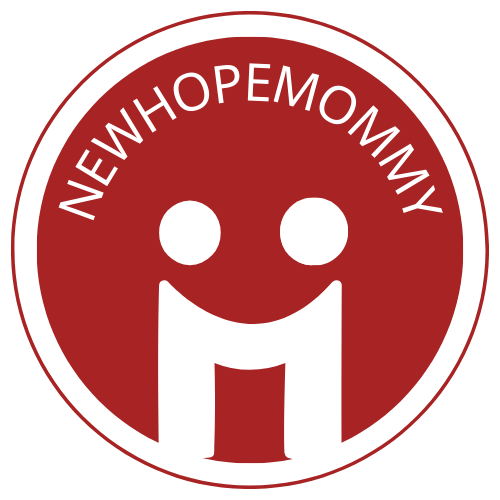Reading charts transform the sometimes daunting task of daily reading into an exciting adventure for kids. These colorful tracking tools help young readers visualize their progress while building essential literacy skills one book at a time.
Parents and teachers love reading charts because they make reading feel less like a chore and more like a game. When children see their progress marked with stickers stars or checkmarks they’re motivated to keep turning pages. It’s like turning reading into a fun treasure hunt where the reward is both knowledge and recognition.
The best part? Reading charts aren’t just about tracking – they’re about celebrating each small victory in a child’s reading journey. From simple picture books to chapter books these visual motivators help transform reluctant readers into bookworms who can’t wait to reach their next milestone.
Table of Contents
ToggleUnderstanding Reading Level Charts for Children
Reading level charts provide a standardized framework to match children with appropriate reading materials based on their abilities. These charts incorporate various assessment metrics to ensure young readers engage with books that challenge them without causing frustration.
Common Reading Level Systems
The Fountas & Pinnell system categorizes books from levels A-Z, starting with simple picture books and progressing to complex chapter books. Lexile measures assign numeric values from 0L to 2000L, reflecting text complexity through sentence structure analysis. The Developmental Reading Assessment (DRA) uses numbers 1-80 to indicate reading proficiency across grade levels.
| Reading System | Level Range | Target Age Group |
|---|---|---|
| Fountas & Pinnell | A-Z | Ages 4-18 |
| Lexile | 0L-2000L | Ages 5-18 |
| DRA | 1-80 | Ages 4-14 |
How Reading Charts Track Progress
Reading charts monitor three key metrics: comprehension accuracy comprehension rate sight word recognition. Teachers mark student achievements on visual trackers using stickers stars or digital badges. Modern reading charts incorporate digital elements like QR codes linking to online assessments quizzes. Progress indicators show specific improvements in areas such as fluency vocabulary word recognition phonics skills.
| Progress Metric | Tracking Method | Assessment Frequency |
|---|---|---|
| Comprehension | Quiz Scores | Weekly |
| Reading Speed | Words per Minute | Bi-weekly |
| Sight Words | Recognition Tests | Monthly |
Benefits of Using Reading Charts for Kids
Reading charts transform reading from a routine task into an engaging activity through visual tracking systems. The structured approach creates measurable goals while celebrating reading achievements.
Motivation and Goal Setting
Reading charts establish clear milestones that inspire kids to reach new reading targets. Children earn stickers, stamps or digital badges after completing specific reading tasks – such as finishing a chapter book or mastering 10 new vocabulary words. The visual representation helps kids track their daily reading minutes, books completed or comprehension levels achieved on a colorful chart. This systematic approach breaks down larger reading goals into smaller, manageable chunks that feel less overwhelming. Charts with incremental rewards maintain motivation by providing regular positive reinforcement through progress tracking.
Building Reading Confidence
Reading charts document growth patterns that showcase a child’s expanding reading abilities. The visual record highlights improvements in reading speed, accuracy scores or books completed at progressively higher levels. Kids gain confidence by seeing concrete evidence of their advancement from picture books to chapter books or from basic sight words to complex vocabulary. Charts create opportunities for self-reflection as children review their reading journey through documented milestones. This tangible proof of progress empowers kids to tackle more challenging reading materials with greater self-assurance.
Choosing the Right Reading Chart for Your Child
Selecting an effective reading chart matches a child’s developmental stage with their learning preferences. The right chart creates a perfect balance between challenge and achievability.
Age-Appropriate Options
Reading charts for ages 3-5 feature large pictures symbols stickers for basic reading recognition tasks. Charts for 6-8 year olds incorporate word lists chapter book progress trackers monthly reading goals. Elementary students ages 9-12 benefit from genre-based charts reading comprehension metrics book review sections. Advanced charts for teens include:
- Reading speed measurements
- Vocabulary expansion tracking
- Literary analysis components
- Genre exploration goals
- Page count achievements
Digital vs. Physical Charts
Digital reading charts offer automated progress tracking customizable rewards instant feedback. Popular reading apps integrate gamification elements like badges achievements leaderboards to maintain engagement. Physical charts provide:
- Tactile experiences with stickers stamps colorful markers
- Prominent display options on walls refrigerators bedroom doors
- Offline accessibility without screen time concerns
- Collaborative opportunities for parent-child interaction
- Personalization through drawing coloring decorating
| Format | Key Benefits | Best For |
|---|---|---|
| Digital | Progress analytics, automated tracking, cloud storage | Tech-savvy families, multiple device users |
| Physical | Tangible rewards, visual presence, creative expression | Hands-on learners, home display preference |
Creative Ways to Make Reading Charts Fun
Reading charts transform into exciting adventures through innovative engagement strategies. These creative approaches captivate young readers while maintaining their enthusiasm for tracking progress.
Reward Systems and Incentives
Effective reading charts incorporate tiered reward systems that celebrate reading milestones. Small rewards like colorful stickers mark daily reading sessions while larger prizes acknowledge completing chapter books or reaching monthly page count goals. Digital badges unlock special privileges such as choosing the next family movie or earning extra screen time. A point-based system converts reading minutes into redeemable tokens for activities like park visits or craft supplies. Reading marathons feature progressive challenges where children earn collectible bookmarks tokens or virtual trophies at 5 10 15 book intervals.
| Reading Milestone | Reward Example | Point Value |
|---|---|---|
| Daily Reading | Stickers | 5 points |
| Chapter Book | Choice Activity | 25 points |
| Monthly Goal | Special Prize | 50 points |
| Reading Marathon | Trophy/Badge | 100 points |
Incorporating Favorite Book Characters
Popular book characters enhance reading charts through themed progress markers. Harry Potter fans track reading progress with house points while Percy Jackson enthusiasts collect Greek god medallions. Character cutouts move along chart pathways marking reading achievements. Customizable superhero avatars level up with each completed book series. Digital charts feature animated character reactions celebrating reading milestones. Theme-specific terminology transforms routine tracking into magical quests enchanted missions or space exploration adventures.
| Character Theme | Progress Marker | Achievement Type |
|---|---|---|
| Harry Potter | House Points | Book Completion |
| Percy Jackson | God Medallions | Series Progress |
| Superheroes | Power Levels | Reading Minutes |
| Space Theme | Planet Badges | Pages Read |
Tips for Parents to Support Reading Progress
Parents play a crucial role in nurturing their children’s reading development through consistent monitoring and encouragement. These practical strategies help create an effective reading support system at home.
Setting Realistic Reading Goals
Reading goals align with each child’s current abilities and interests. A 6-year-old beginner reader starts with 10-15 minutes of daily reading time, while an 8-year-old advances to 20-30 minutes. Parents track specific metrics like:
- Complete 3 picture books per week for early readers
- Read 1 chapter from longer books daily for intermediate readers
- Master 5 new sight words weekly
- Increase reading speed by 10 words per minute monthly
Setting benchmarks based on the child’s reading level creates achievable targets. A kindergartener focuses on letter recognition before advancing to simple words, while a third-grader tackles chapter books with more complex vocabulary.
Making Chart Updates a Routine
Regular chart updates maintain momentum in a child’s reading journey. Parents incorporate these tracking activities:
- Mark progress immediately after reading sessions
- Review completed books every Sunday evening
- Update reading speed measurements bi-weekly
- Track comprehension through quick post-reading discussions
- Record new vocabulary words in a dedicated section
Chart updates become part of daily activities when paired with existing routines. Morning chart reviews preview daily goals, while evening updates celebrate accomplishments. Digital charts sync automatically with reading apps, creating seamless progress tracking across devices.
Conclusion
Reading charts serve as powerful tools that transform the reading journey into an exciting adventure for children. These visual aids not only track progress but create a positive reading environment that encourages kids to reach new heights in their literacy development.
By implementing the right reading chart system parents and educators can help children develop a lifelong love for reading. Whether choosing digital or physical formats the key lies in consistency personalization and celebration of achievements.
A well-designed reading chart does more than monitor progress – it builds confidence empowers young readers and makes the path to reading mastery an enjoyable experience for everyone involved.







